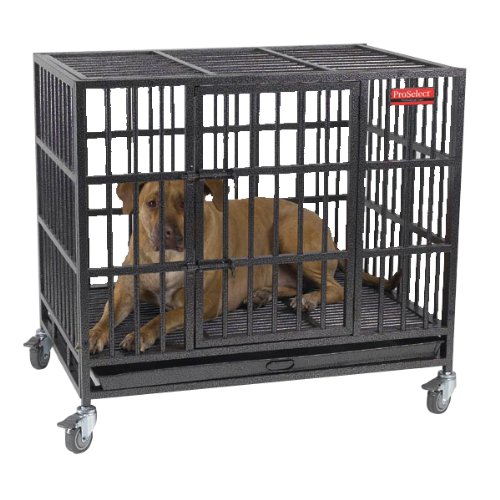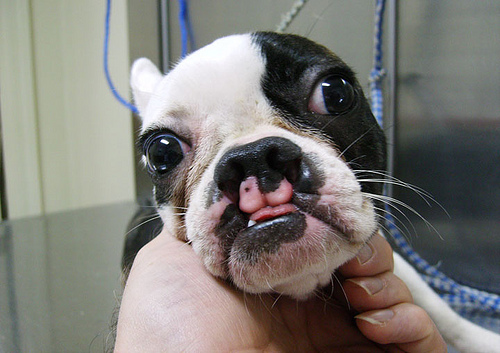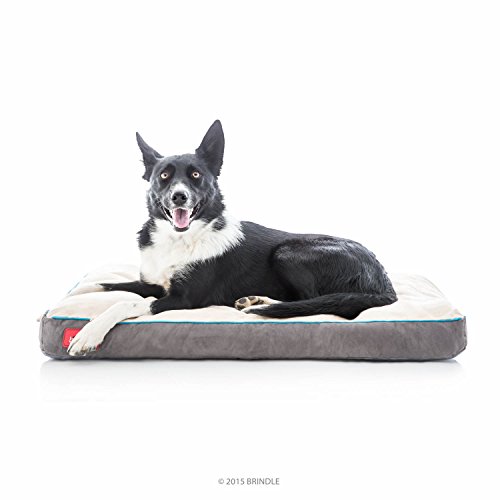Many people feel that using an indoor kennel crate for their puppy is somehow cruel. Nothing could be further from the truth. When used properly, a crate can be one of the most valuable tools for training and maintaining your new puppy.
Dogs naturally love den-like enclosures and an indoor kennel crate will satisfy this desire. Dogs are also naturally reluctant to soil where they sleep so crating is an extremely effective housebreaking tool. Crating can keep a puppy away from potentially dangerous household items and can be moved from room to room whenever necessary.
Crating can help to ease separation anxiety and prevent destructive behaviour when you cannot physically supervise your puppy. When you have to leave your puppy alone or when you go to bed at night, you can rest assure that your puppy is not only safe, but he is also not chewing your furniture, electrical wires, rugs and so on.
It is very important that you introduce the crate to your puppy as a safe place to rest in. You should therefore never use the crate as a form of punishment. Your puppy should associate his crate with security, comfort and enjoyment. There are quite a few things that you can do to foster these positive feelings about the crate in your dog.
Drop pieces of food such as kibble or special treats in your puppy's crate throughout the day. As your puppy discovers these treats it will reinforce the notion that the crate is a positive place. Along the same principle you can also feed your puppy in his crate.
When you first introduce your puppy to his crate, praise and fondle him when he goes inside. Make a game of it by including rewarding him with treats when he enters. Never attempt to force your dog into his crate. However, at night when going to bed you may have to place your puppy inside and then shut the door. It is recommended that you place the crate near to your bed to reduce your puppy's anxiety at night. Dogs are pack animals and do not like to sleep alone.
It is an excellent idea to begin crating your puppy for short periods of time while you are home with him. This will prevent your puppy from making the negative association that going into his crate means that you will be leaving him alone.
It is important to allow your dog the opportunity to fully eliminate before he goes into his crate. Young puppies have very little bladder and sphincter control so you should not crate your pet for extended periods of time. Puppies under 4 months of age should not be crated more than 3 hours. Except for overnight, puppies and dogs should not be crated for more than 5 hours at a time.
Always remove your dogs' collar before crating. Ensure that your crate is the proper size. If it is too big, your puppy may eliminate in one end of the crate and sleep in the other. If this occurs you may have to block off a section of the crate to discourage this behaviour.
Many dogs who are properly introduced to crating at a young age grow to like their crate as their place to rest and get away from it all. This is ideal for owners because you can then use your crate when travelling or visiting and not have to worry about your dog. He has his safe, secure place to go.

 Caring For Your Golden Doodle
Owning a puppy or a dog can
Caring For Your Golden Doodle
Owning a puppy or a dog can
 Pro Select Empire Cages
Crate training a dog is a go
Pro Select Empire Cages
Crate training a dog is a go
 Cleft Palates and Cleft Lips in Puppies - Dog Health
Cleft Palates and Cleft Lips in Puppies
Cleft palates and
Cleft Palates and Cleft Lips in Puppies - Dog Health
Cleft Palates and Cleft Lips in Puppies
Cleft palates and
 Canine Nutrition and Wellness Part 1: Choosing the Right Commercial Food for Your Dogs
Our canine friends love to e
Canine Nutrition and Wellness Part 1: Choosing the Right Commercial Food for Your Dogs
Our canine friends love to e
 Memory Foam Pad for Dog Bed
Using a memory foam pad for
Memory Foam Pad for Dog Bed
Using a memory foam pad for